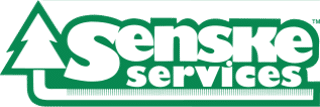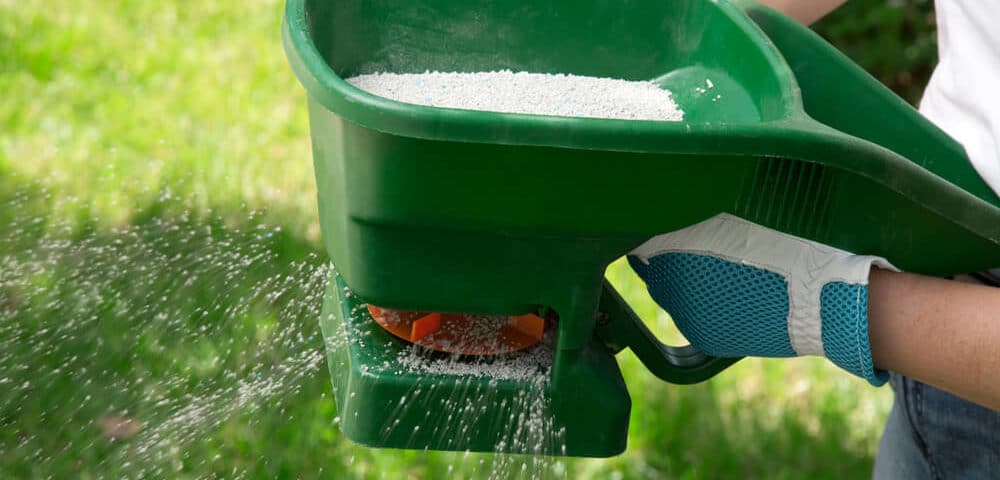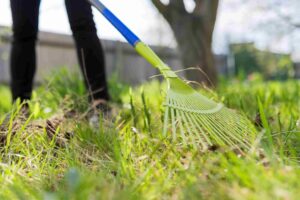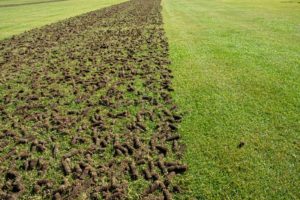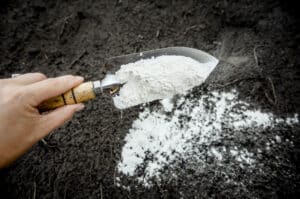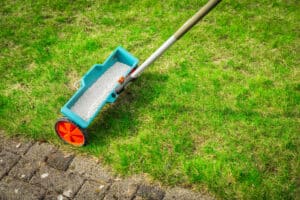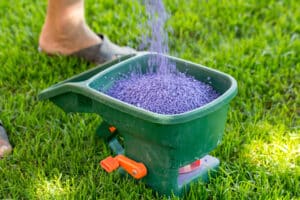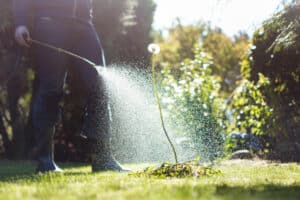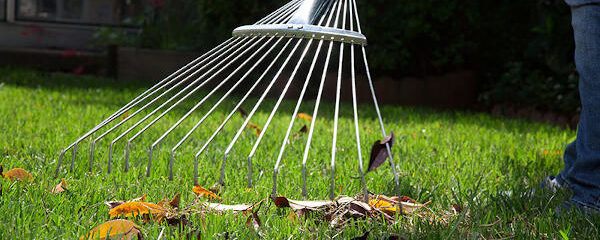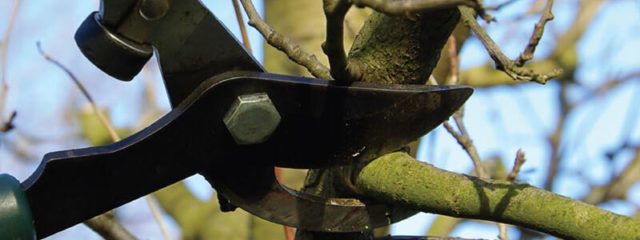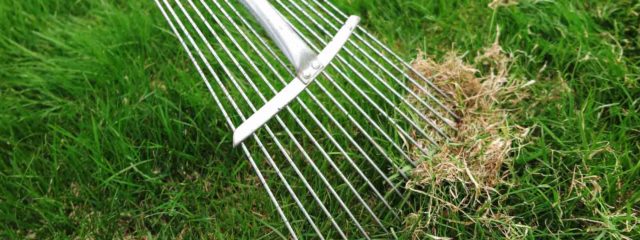Now is the time to start planning for your summer lawn. Spring is here! Follow these spring lawn care tips and steps to prepare your lawn for summer growth in Washington, Idaho, and Utah.
Step 1 – Preparation for Lawns in Idaho, Utah, and Washington
Before you start adding fertilizer or aerating your lawn, you need to clean it up. Over the fall and winter, twigs, branches, and leaves fell, and they need to be removed. Wait for a day when your lawn is dry as raking wet soil can dislodge your grass. Begin with clearing large debris like outdoor toys and trash that has made a winter home on the lawn. After that, rake again to remove dead grass, smaller twigs, and leaves. You want to start with a clean canvas as you prepare your lawn for summer.
One method of removing the old growth on your lawn, the “thatch”, is mechanical lawn dethatching. However, we don’t typically recommend dethatching your lawn because it may cause more harm than benefits. Instead, try core aeration on your lawn, which we talk about in Step 2.
Spring Lawn Preparation for Idaho: Once snow begins to thaw, you may notice that your lawn has developed some nasty spots or rings. Lawn fungi tends to pop up in spring in both the Treasure Valley, Boise and in East Idaho (Idaho Falls, North Idaho, Coeur d’Alene), removing thatch gently by hand and applying lawn disease treatments can help.
Spring Lawn Preparation for Utah: Whether you live near Salt Lake, Provo, Ogden, or Salt Lake City, we recommend clearing your yard of any debris left over from winter. Remove dead grass, weeds, and thatch by gently raking. This will help nutrients and fertilizer feed your grass and reduce the chance of lawn diseases such as snow mold.
Spring Lawn Preparation for Washington: In Western Washington and around the Puget Sound, winter rain can often wash away vital nutrients. Build-up of thatch can encourage harmful fungi growth on your lawn, such as necrotic ring spots or brown patches. In Eastern Washington, such as Yakima, Spokane, or the Tri-Cities, removing lingering debris can help your lawn breath and allow vital nutrients in.
Step 2 – Lawn Aeration Tips for Idaho, Utah, and Washington
Ongoing traffic year after year can cause the soil underneath your grass to become compacted. Compacted soil often means that the roots of your lawn cannot get the oxygen they need to thrive. Take a moment this spring to check for compaction. After watering, if your lawn has pools of water or water runs off your lawn instead of soaking into the soil, it is likely your soil is too compacted. You can also test for compaction by simply feeling how difficult it is to dig into a small spot as healthy soil should feel loose and crumbly when healthy.
The solution for compaction is lawn aeration. Lawn aeration is best done in the fall for cool-season grasses, and in late spring or early summer for warm-season grasses. You can also talk to your local lawn care company about aeration as part of spring lawn care if you notice that you have a big problem. By aerating in the spring, you can promote healthy root growth before the summer heat. This can help your lawn better withstand summer stress and drought conditions, giving a fuller looking lawn in the summer months.
When using a core aerator machine, we recommend marking any sprinkler heads you may have to avoid damaging them.
Spring Lawn Aeration Tips for Idaho: In East Idaho, such as in Idaho Falls, the best time to aerate your lawn is either spring or fall. If you choose to aerate in spring, core aeration can help bring your grass out of dormancy quicker and look better during summer. This is also true for Northern Idaho, such as in Coeur d’Alene. In Boise and Treasure Valley, spring is an excellent time to aerate. Lawns that come with a new home often have a stripped topsoil leftover from construction. This leaves your new lawn with a poor growing environment. Aerating the grass can break up the compacted soil and allow nutrients to reach the roots.
Spring Lawn Aeration Tips for Utah: Spring is the best time to aerate lawns in Northern Utah. Core aeration is the best way to let nutrients and fertilizer get to the roots. Once temperatures begin to rise in late spring, the soil should be about 55-60 degrees Fahrenheit when it’s time to aerate.
Spring Lawn Aeration Tips for Washington: Make sure your soil is moist before using a core aerator on your lawn. Both spring and fall are the best times to aerate your lawn in Washington State whether you live in Western or Eastern Washington.
Step 3 – Add Lime – Essential for Acidic Soil in Idaho, Washington, and Utah
Often times when soil is compacted, the lack of nutrients also means that the soil is acidic. Grass requires neutral pH in the soil, so acidic soil will hinder its growth. Giving your lawn a lime treatment will help neutralize soil pH and create an environment where grass can thrive.
Lime takes time to work, which is why treatment is optimal in early spring. Lime is only necessary if you have acidic soil, so purchase an at-home soil test kit or consider having your soil tested at your local county extension office before applying lime. The pH level of your soil should be around 6-7 pH. To avoid over-application, use roughly 6 pounds of lime per 1,000 sq feet of lawn.
Lime Treatment Tips for Idaho: Your lawn’s pH balance is important for its overall health. For Eastern Idaho, your soil’s pH should be around 6-7. If it is lower, your lawn could probably use lime treatment to restore pH balance. This is also true for Western Idaho and Boise.
Lime Treatment Tips for Utah: Depending how acidic or alkaline your soil is, you may need a lime treatment for your lawn. The drier climates of Utah County and Salt Lake County tend to have alkaline soil, but acidic soil can happen. If you test your soil pH, it should be between 6-7. If it is less than 6, it is overly acidic, if it is more than 7, it is overly alkaline.
Lime Treatment Tips for Washington: If you live in Eastern Washington, such as in Kennewick, Yakima, or Spokane, be sure to check your soil pH. The soil tends to be less acidic but should not be overlooked. If you live in Western Washington, such as Tacoma or Seattle, the pH level of your soil should be between 5.5 and 7.
Step 4 – Overseeding in the Pacific Northwest and Utah
If you notice that your lawn has bare patches after the winter, then you need to consider overseeding. Bare patches are often caused due to dogs using the restroom repeatedly in the same area, heavy foot traffic, or even something that sat on the lawn all winter and damaged the grass. To overseed, add grass seed to those bare patches, then apply a slow-release nitrogen fertilizer to the spot as well. You can overseed in the spring for severe problems, or put it off until late fall when crabgrass is not a risk. Either way, make plans for overseeding now, then give the new grass time to germinate.
You can also use the principle of overseeding to thicken your entire lawn. Simply spread some seed over the lawn with a spreader to allow it to thicken when the growing season hits.
Overseeding Tips for Idaho: In Boise, Meridian, and the rest of Treasure Valley, overseeding your lawn is recommended if your grass is looking thin or bare. When overseeding in Eastern Idaho, around Rexburg or Idaho Falls, make sure the ground has been moistened beforehand.
Overseeding Tips for Utah: Overseeding is recommended if your lawn is looking thin or bare. Over time, lawns will thin as they age and will need to be filled in with new grass seed. Overseeding before or after a growing season is the best way to maximize overseeding.
Overseeding Tips for Washington: Adding a layer of new grass seed, or overseeding, is best done in late April in Washington. If you have thinning grass or bare spots overseeding can help when done along with fertilizing.
Step 5 – Fertilizing Lawns in the Pacific Northwest and Utah
Spring is when you need to fertilize to ensure your lawn has plenty of food to grow through the growing season. If you have warm-season grass, fertilize in late spring when you see the lawn starting to green and grow. For cool-season grasses, fertilize only lightly in spring using a slow-release fertilizer. Feeding too much in the spring will encourage new growth that will not be able to withstand the heat of summer. Save your heavy fertilizing for fall when the cool season grass will thrive.
Spring Fertilizer Tips for Idaho: Soil in Boise and the rest of Treasure Valley has an arid climate, which means there are less nutrients available to your grass. Fertilizing in late April and early May can give your lawn the boost it needs to start the growing season. This is true for Eastern Idaho too.
Spring Fertilizer Tips for Utah: We recommend using a slow-release fertilizer that contains at least 20% nitrogen. Using a spreader will make sure the fertilizer is spread more evenly over your lawn which will reduce the risk of fertilizer burn. If there is no rain in the forecast, make sure you water your lawn to dissolve the fertilizer into the soil.
Spring Fertilizer Tips for Washington: For Eastern Washington, such as Kennewick, Yakima, or Spokane, a nitrogen-rich fertilizer application should be used in spring. Because soil in Eastern Washington tends to be well-balanced, spring fertilizer without potassium or phosphorus and it will help it keep green in summer.
Try to spread the fertilizer one half to one pound of fertilizer per 1,000 sq. feet of lawn. Be careful not to overwater or over-fertilize your lawn because it may encourage the growth of lawn fungus that create brown patches in your grass or necrotic ring spots.
When to apply fertilizer in spring? Late April and early May is the best time to add fertilizer in Eastern Washington.
Step 6 – Pre-Emergent Weed Control for Idaho, Utah, and Washington
Spring is the best time to get a handle on weeds, before they have a chance to take deep root. Choose a pre-emergent weed control herbicide and spread it in the spring, so that you can enjoy the benefit of weed-free lawn all summer long. Pre-emergent weed control stops weed seeds from germinating, and the first application should be in early to mid spring. These products work for about three months, so you will need to apply them again in the summer.
Spring Weed Control Tips for Idaho: Spring is the right time to apply pre-emergent weed control anywhere in Idaho. Grassy weeds, broadleaf weeds, and crabgrass will begin to pop up around this time. Use a weed control treatment to stem the tide of emerging weeds.
Spring Weed Control Tips for Utah: When it comes to weed control in Utah, prevention is your best solution. A regularly scheduled weed control can work well against weeds that pop up as weather warms up. The weeds to look out for in Utah during spring are dandelions, henbit, ground ivy, and mallow. Later on, you might expect crabgrass, spurge, morning glory and oxalis.
Spring Weed Control Tips for Washington: For weed control in Washington, it’s always best to use a pre-emergent application in spring. Once weeds start popping up, they are a pain to remove, so preventative weed control is always recommended. Noxious weeds can be a big problem in some areas of Washington State. Be sure to check out noxious weed tips from the Washington State Noxious Weed Control Board for best practices against noxious weeds.
If you are looking for help with your spring lawn care, or if you are feeling overwhelmed with all that needs to be done, the lawn pros at Senske are ready to help. We will get your lawn ready for spring with the expertise of an experienced, knowledgeable team of lawn care professionals. Contact us today for a free estimate for your spring lawn care, and enjoy the benefit of working with a company that has over 75 years of experience keeping lawns green and thriving.
Senske Services has been caring for lawns for over 75 years in Washington, Idaho, and Utah.
Senske Locations in Washington: Clarkston, Kennewick, Yakima, Spokane, Seattle, Tacoma
Senske Locations in Idaho: Boise, Idaho Falls, Coeur d’Alene
Senske Locations in Utah: Salt Lake City, Provo, Ogden
We can help you with regularly scheduled lawn care services that cover everything from lawn aeration, fertilizer services, to specialized lime treatments, and regular weed control services to keep your lawn looking its best all season long. Call your local Senske Services for a free estimate!
